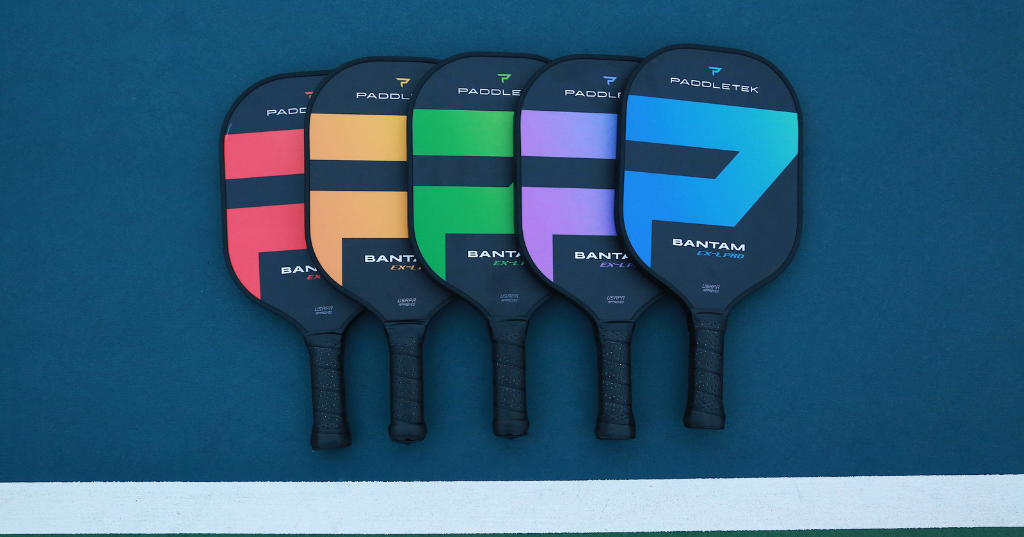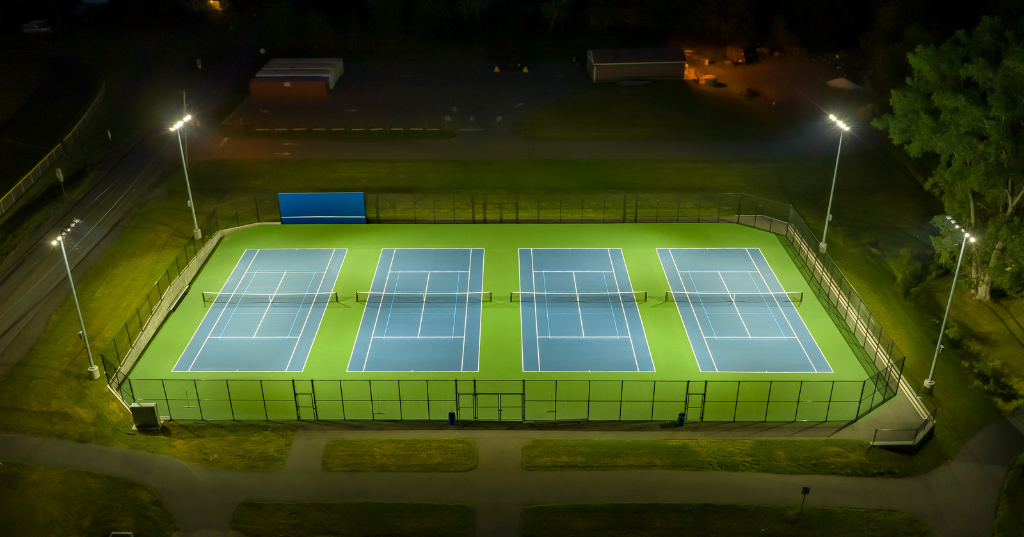At a certain point in doubles pickleball, you start to realize the immense value of great communication and positioning on the court. The latter can alter the course of a game— and that's where stacking comes in.
Not sure what stacking is? Uncertain of where to start? This guide will teach you everything you need to know to understand all aspects of stacking in pickleball.
What Is Stacking in Pickleball?
Stacking in pickleball is a doubles strategy where both players on a team line up, or stack, on the same side of the court before a serve or return. After the ball is hit, each player shifts to their desired side; this formation improves mobility and controls where you stand on the court.
Control is the key word here, as players shift to the side that enhances strengths and covers weaknesses.
Stacking is a strategy used in pickleball when players on a team are not in traditional positioning and are instead rearranged in order to keep one player on a particular side of the court. Unlike traditional play, the stacking team will start on the same side and then once the serve or return is hit, they shift into the desired positioning.
Why Stack? What Are the Advantages?
There are several reasons a team should utilize the stacking strategy:
- Stacking can allow a team to maximize their strengths. For example, if a player has a strong forehand, stacking can be used to keep that player’s forehand in the middle. This allows for more forehand poaching opportunities.
- If one of the players is left-handed, stacking can be used to keep both forehands in the middle.
- Stacking can be used to hide a player's weakness (backhand weakness example).
- Stacking can be used to maximize team mobility. For example, with a right-handed player, the more agile person could be on the ad side to cover overheads for the less agile player.
The stacking team benefits from adjusting to its strengths and weaknesses. But because you can pick a new side after each rally, if a team can spot an opponent's weakness, they can stack to take advantage of that. In other words, a team can stack to one side because of its own skills, or stack because of the opposing team's weaknesses.
Knowing about stacking and being able to actually pull it off in a game are two very different things.
How to Stack: The Ultimate Guide
First, it is important to understand traditional positioning. Traditional player positions are when the players on each team start with a player on the ad side and a player on the deuce side. The serving team rotates back and forth when they score. The returning team players stay on their respective ad and deuce [right] sides.

Traditional Positioning in Pickleball
Players 1 and 2 are the serving team, and 3 and 4 are returning. In this example, Player 1 is the first server and is serving to Player 4. All players are in traditional positioning.
On both teams, there is a player starting on the ad side and a player on the deuce side.
As long as Players 1 and 2 are the serving team, they will rotate sides after each point they score. On the returning side, Players 3 and 4 will not rotate while they continue to be the returning team, and their score stays the same.

Stacking on Serve
When stacking on serve, you usually see both players start on the same side (ad or deuce) and then one player will slide over to the open side—like in the visual above.
Players 1 and 2 are the stacked serving team, and Players 3 and 4 are returning in traditional positioning.
In this example, the serving team, or Players 1 and 2, are stacked and are trying to move Player 1 to the ad side. Unlike traditional positioning, both Players 1 and 2 are starting the point on the deuce side.
After serving, Player 1 will shift to the right side, or ad side. Since Player 1 is the first server, the team will be stacked when their score is odd but will be in traditional positioning when their score is even. This will allow Player 1 to always be on the ad side after the serve and Player 2 to always be on the deuce side.
Stacking on Return
When stacking on return, both players will again start on the same side, with the returning player at the baseline and the non-returning player next to the kitchen line. The returning player will cross over to the opposite side while the non-returning player slides into the volley position near the kitchen. In order to keep a player on a certain side, the returning team will have to stack when both players are receiving.
The following two visuals show stacking with both returning players. In both examples, the returning team is trying to keep Player 1 on the ad side and Player 2 on the deuce side.

Players 1 and 2 are the receiving team and are in a stacked position. Player 4 is the server and is serving to Player 1. In this example, Player 1 will cross over to the ad side after he returns the ball. Player 2 will slide into the deuce side. This allows Player 1 to remain on the ad side while returning.

Player 3 is the server on the ad side and is serving to Player 2. In this example, Player 2 will cross over to the deuce side after he returns the ball. Player 1 will slide into the ad side.
Stacking on return can be trickier. It is important to note the score and if it is odd or even.
If it is even, the person on the team who started the game must return the serve from the deuce side. If the score is odd, the person on the team who started the game must return from the ad side.
Important Considerations for Stacking:
- Always check to make sure your team is on the correct side and is the correct server/returner. Nothing is worse than losing a point or serve for mixing this up!
- Stacking on return requires a lot more running to get the returning player crossed over. Therefore, if someone is not as agile, it may not make sense to have him stack when returning.
- If one player is less agile, you can do a 3/4 stack. This means stacking on serve and only half the time on return. When the less agile player is returning, you will stay in traditional positioning so that he will not have to run across the court.
To sum up, once you and your partner know your own and each other’s strengths and weaknesses, you can use stacking to change your post-serve placement on the court to take advantage of your strengths and compensate for your weaknesses.
Your stacking strategy will likely depend to some degree on your opponent’s strengths and weaknesses.
The important thing to remember is that you don’t have to stay in your serving positions. A doubles team that knows how to shift positions to make the most of each play will take home more wins!


Leave a comment
This site is protected by hCaptcha and the hCaptcha Privacy Policy and Terms of Service apply.